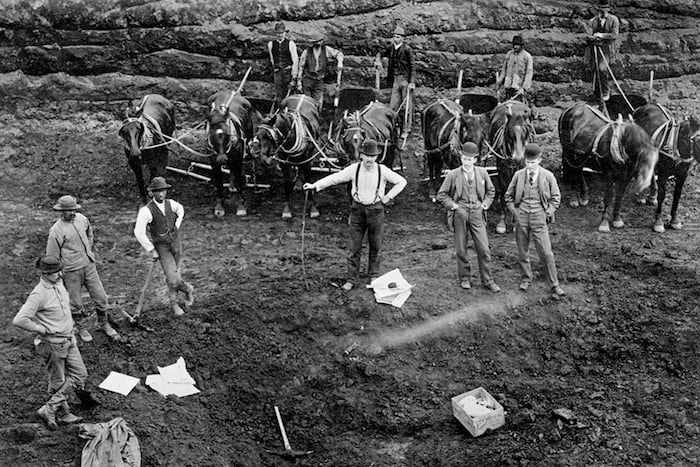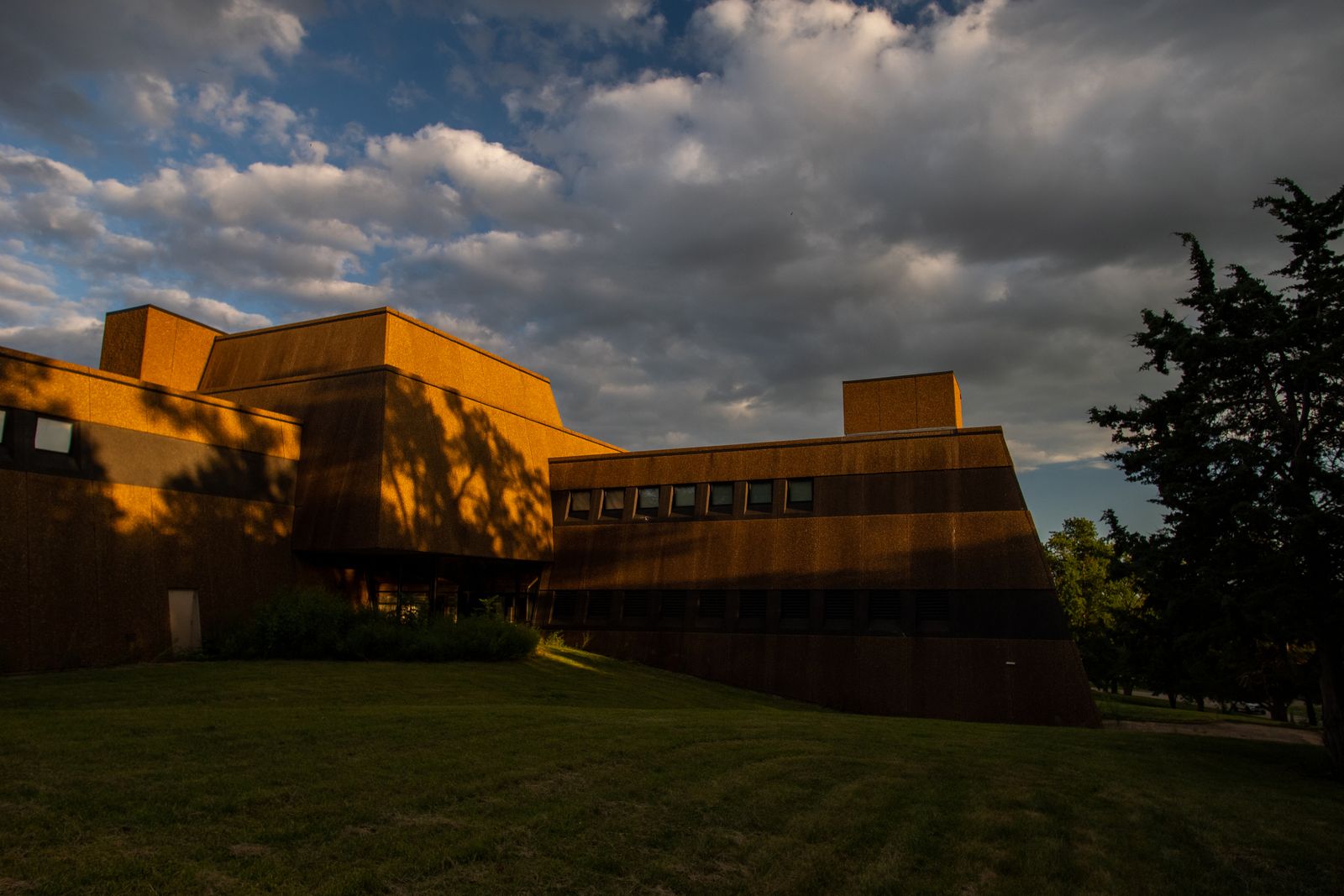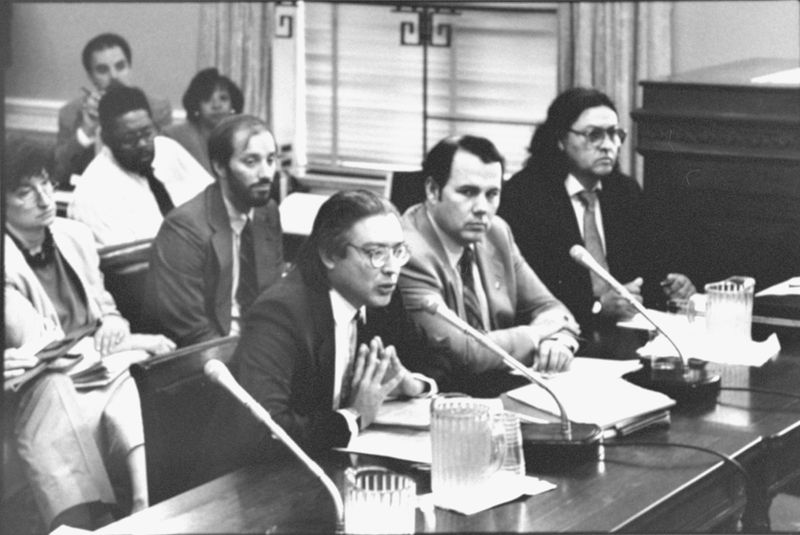University of Iowa, Office of the State Archaeologist
The Univ. of Iowa reported still having the remains of at least 29 Native Americans.
The institution has made available for return 98% of the more than 1,400 Native American remains that it reported to the federal government.
Where Native American remains reported by the Univ. of Iowa were taken from
Timeline of Native American remains made available for return to tribes by the Univ. of Iowa
How the Univ. of Iowa compares to other institutions
The Univ. of Iowa made Native American remains available for return to 113 tribes.
| Tribe | Remains Made Available for Return To |
|---|---|
| Iowa Tribe of Kansas and Nebraska | 597 |
| Iowa Tribe of Oklahoma | 597 |
| Otoe-Missouria Tribe of Indians, Oklahoma | 597 |
| Three Affiliated Tribes of the Fort Berthold Reservation, North Dakota | 512 |
| Omaha Tribe of Nebraska | 492 |
| Institution could not determine a culturally affiliated tribe and remains were transferred or reinterred according to state or other law | 462 |
| Ponca Tribe of Indians of Oklahoma | 438 |
| Ponca Tribe of Nebraska | 438 |
| Ho-Chunk Nation of Wisconsin | 414 |
| Winnebago Tribe of Nebraska | 414 |
| Flandreau Santee Sioux Tribe of South Dakota | 354 |
| Lower Sioux Indian Community in the State of Minnesota | 354 |
| Santee Sioux Nation, Nebraska | 354 |
| Sisseton-Wahpeton Oyate of the Lake Traverse Reservation, South Dakota | 354 |
| Yankton Sioux Tribe of South Dakota | 348 |
| Sac and Fox Nation of Missouri in Kansas and Nebraska | 347 |
| Sac and Fox Nation, Oklahoma | 347 |
| Sac and Fox Tribe of the Mississippi in Iowa | 347 |
| Citizen Potawatomi Nation, Oklahoma | 340 |
| Prairie Band of Potawatomi Nation | 340 |
| Peoria Tribe of Indians of Oklahoma | 334 |
| Pawnee Nation of Oklahoma | 332 |
| Spirit Lake Tribe, North Dakota | 168 |
| Upper Sioux Community, Minnesota | 168 |
| Cheyenne River Sioux Tribe of the Cheyenne River Reservation, South Dakota | 162 |
| Osage Nation | 155 |
| Miami Tribe of Oklahoma | 148 |
| None | 145 |
| Oglala Sioux Tribe | 88 |
| Kaw Nation, Oklahoma | 77 |
| Kiowa Indian Tribe of Oklahoma | 76 |
| Standing Rock Sioux Tribe of North and South Dakota | 76 |
| Bois Forte Band (Nett Lake) of the Minnesota Chippewa Tribe, Minnesota | 61 |
| Fond du Lac Band of the Minnesota Chippewa Tribe, Minnesota | 61 |
| Grand Portage Band of the Minnesota Chippewa Tribe, Minnesota | 61 |
| Leech Lake Band of the Minnesota Chippewa Tribe, Minnesota | 61 |
| Mille Lacs Band of the Minnesota Chippewa Tribe, Minnesota | 61 |
| Minnesota Chippewa Tribe, Minnesota | 61 |
| Prairie Island Indian Community in the State of Minnesota | 61 |
| White Earth Band of Minnesota Chippewa Tribe, Minnesota | 61 |
| Bad River Band of the Lake Superior Tribe of Chippewa Indians of the Bad River Reservation, Wisconsin | 60 |
| Forest County Potawatomi Community, Wisconsin | 60 |
| Hannahville Indian Community, Michigan | 60 |
| Keweenaw Bay Indian Community, Michigan | 60 |
| Lac Courte Oreilles Band of Lake Superior Chippewa Indians of Wisconsin | 60 |
| Lac du Flambeau Band of Lake Superior Chippewa Indians of the Lac du Flambeau Reservation of Wisconsin | 60 |
| Menominee Indian Tribe of Wisconsin | 60 |
| Red Cliff Band of Lake Superior Chippewa Indians of Wisconsin | 60 |
| Sokaogon Chippewa Community, Wisconsin | 60 |
| United Keetoowah Band of Cherokee Indians in Oklahoma | 59 |
| Absentee-Shawnee Tribe of Indians of Oklahoma | 54 |
| Delaware Nation, Oklahoma | 54 |
| Delaware Tribe of Indians | 54 |
| Kickapoo Tribe of Indians of the Kickapoo Reservation in Kansas | 54 |
| Kickapoo Tribe of Oklahoma | 54 |
| Miccosukee Tribe of Indians | 35 |
| Seminole Tribe of Florida | 35 |
| The Seminole Nation of Oklahoma | 35 |
| Crow Creek Sioux Tribe of the Crow Creek Reservation, South Dakota | 34 |
| Lower Brule Sioux Tribe of the Lower Brule Reservation, South Dakota | 34 |
| Rosebud Sioux Tribe of the Rosebud Indian Reservation, South Dakota | 34 |
| Assiniboine and Sioux Tribes of the Fort Peck Indian Reservation, Montana | 22 |
| Apache Tribe of Oklahoma | 21 |
| Cheyenne and Arapaho Tribes, Oklahoma | 21 |
| Comanche Nation, Oklahoma | 21 |
| Crow Tribe of Montana | 21 |
| Northern Arapaho Tribe of the Wind River Reservation, Wyoming | 21 |
| Northern Cheyenne Tribe of the Northern Cheyenne Indian Reservation, Montana | 21 |
| Shakopee Mdewakanton Sioux Community of Minnesota | 13 |
| Pueblo of Acoma, New Mexico | 6 |
| St. Croix Chippewa Indians of Wisconsin | 6 |
| Stockbridge Munsee Community, Wisconsin | 6 |
| Tule River Indian Tribe of the Tule River Reservation, California | 6 |
| Big Sandy Rancheria of Western Mono Indians of California | 5 |
| Cherokee Nation | 5 |
| Chickasaw Nation | 5 |
| Chicken Ranch Rancheria of Me-Wuk Indians of California | 5 |
| Choctaw Nation of Oklahoma | 5 |
| Cold Springs Rancheria of Mono Indians of California | 5 |
| Eastern Band of Cherokee Indians | 5 |
| Hopi Tribe of Arizona | 5 |
| Ione Band of Miwok Indians of California | 5 |
| Jackson Band of Miwuk Indians | 5 |
| Northfork Rancheria of Mono Indians of California | 5 |
| Ohkay Owingeh, New Mexico (formerly the Pueblo of San Juan) | 5 |
| Pueblo of Cochiti, New Mexico | 5 |
| Pueblo of Isleta, New Mexico | 5 |
| Pueblo of Jemez, New Mexico | 5 |
| Pueblo of Laguna, New Mexico | 5 |
| Pueblo of Nambe, New Mexico | 5 |
| Pueblo of Picuris, New Mexico | 5 |
| Pueblo of Pojoaque, New Mexico | 5 |
| Pueblo of San Felipe, New Mexico | 5 |
| Pueblo of San Ildefonso, New Mexico | 5 |
| Pueblo of Sandia, New Mexico | 5 |
| Pueblo of Santa Ana, New Mexico | 5 |
| Pueblo of Santa Clara, New Mexico | 5 |
| Pueblo of Taos, New Mexico | 5 |
| Pueblo of Tesuque, New Mexico | 5 |
| Pueblo of Zia, New Mexico | 5 |
| Santa Rosa Indian Community of the Santa Rosa Rancheria, California | 5 |
| Santo Domingo Pueblo | 5 |
| Shawnee Tribe | 5 |
| Shingle Springs Band of Miwok Indians, Shingle Springs Rancheria (Verona Tract), California | 5 |
| Table Mountain Rancheria | 5 |
| Tuolumne Band of Me-Wuk Indians of the Tuolumne Rancheria of California | 5 |
| Ysleta del Sur Pueblo | 5 |
| Zuni Tribe of the Zuni Reservation, New Mexico | 5 |
| Caddo Nation of Oklahoma | 3 |
| Office of Hawaiian Affairs | 3 |
| Quapaw Nation | 2 |
| Confederated Tribes and Bands of the Yakama Nation | 1 |
| Red Lake Band of Chippewa Indians, Minnesota | 1 |
The Univ. of Iowa reported making 98% of more than 1,000 associated funerary objects available for return to tribes.
Know how an institution is handling repatriation? Have a personal story to share? We'd like to hear from you.
Watch an informational webinar with our reporters.
This tool presents a dataset maintained by the National Park Service containing all the Native American human remains and associated funerary objects that institutions have reported to the federal government under the Native American Graves Protection and Repatriation Act. The dataset includes information about the state and county where remains and objects were taken from, which institutions hold them and whether they have been made available for return to tribes.
The data is self-reported by institutions. The amount of unrepatriated Native American remains reported by institutions is a minimum estimate of individuals and institutions frequently adjust these numbers when they reinventory groups of remains. Some institutions that are subject to NAGPRA have also entirely failed to report the remains in their possession. As a result, the numbers provided are best taken as estimates. The actual number and geographic scope of what’s held by publicly funded institutions is larger than what is presently documented.
ProPublica supplemented this dataset with information about cultural affiliation and disposition to specific tribes by systematically parsing the text of Notices of Inventory Completion published in the Federal Register. An additional dataset from the Department of Housing and Urban Development, the Tribal Directory Assessment Tool, was used for the section on remains not made available for return from counties that each tribe has indicated interest in to the federal government.
Institution location and tribal headquarters location information was provided by National NAGPRA. The location of some groups that are not federally recognized was provided through research by ProPublica.
Institutions that are part of a larger entity are grouped. (For example, the Mesa Verde National Park is part of the U.S. Department of the Interior.)
Institutions that have not submitted information to the federal government are not listed. The Smithsonian Institution is not listed because its repatriation process falls under the National Museum of the American Indian Act and it is not required to publicly report its holdings with the same detail as institutions subject to NAGPRA.
If you work for an institution and would like to provide comment on your institution’s repatriation efforts, please email [email protected]. If you think the data is incorrect or have a data request, please get in touch. We are aware of some issues with the accuracy of location information and tribes mistakenly being identified for disposition of Native American remains in published notices.
If you want to share something else with ProPublica, we’d like to hear from you.
If you have questions about implementing or complying with the Native American Graves Protection and Repatriation Act, get in touch with National NAGPRA or the NAGPRA Community of Practice.
We use the word “tribes” to refer to all groups that institutions made Native American remains available to under NAGPRA. This includes tribes, nations, bands, pueblos, communities, Native Alaskan villages, Native Hawaiian organizations and non-federally recognized groups.
Data sources from Department of the Interior, National Park Service, National NAGPRA Program, the Federal Register, Department of Housing and Development, Tribal Directory Assessment Tool


